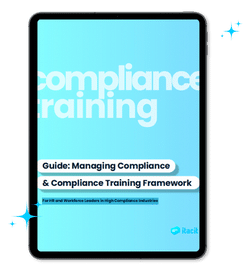Employees waste nearly 2 hours daily just looking for information they need. This adds up to 9 hours every week spent on finding data. AI knowledge management offers a better way.
Business leaders understand this challenge well. About 79% of them see knowledge management as vital to reaching their company goals. Companies just need smarter ways to handle information, and AI provides the answer. The numbers tell the story – experts predict the global knowledge market will reach $2.1 trillion by 2030. This shows how crucial good information management has become in today’s business world.
AI knowledge management helps companies make their information more available and useful. The results speak for themselves – 63% of companies say their customer service improved after adding AI self-service options. Companies that manage their knowledge well see better security, higher productivity, and happier employees. Their staff members feel less burned out and stay longer with the company.
Data keeps growing at an incredible pace. Experts predict we’ll create 200 zettabytes of data by 2025. Your company’s success will depend on how well you handle all this information. This piece shows you how AI-powered knowledge management improves efficiency, what technologies make it possible, and how your organization can use it to handle information better.
Understanding AI-Powered Knowledge Management
AI is changing faster how organizations manage their collective knowledge. ChatGPT has reached over 300 million weekly users and 90% of Fortune 500 companies use its technology. We see a transformation in knowledge management practices.
What is AI in knowledge management?
AI knowledge management uses artificial intelligence to capture, organize, share, and use organizational knowledge effectively. Modern AI systems do more than store information, they process and turn it into available insights.
AI knowledge management combines several powerful technologies:
- Natural Language Processing (NLP) helps systems understand human language and makes interactions more natural
- Machine Learning algorithms spot patterns and relationships in data and improve over time
- Deep Learning handles vast amounts of unstructured information like images and videos
These technologies analyze data, recognize patterns, learn from experience, and adapt. To cite an instance, iTacit’s AI HR Assistant uses these capabilities to streamline internal communications and boost employee experience.
AI knowledge management does more than just store data, it changes how teams create, store, retrieve, and apply knowledge. AI systems analyze vast datasets to spot patterns and generate new insights. They organize and find relevant content when needed.
How AI is different from traditional KM systems
Traditional knowledge management depends on manual effort. Teams must update databases, create documentation, and maintain intranet portals, tasks that need intensive labor. Standard systems use mechanical keyword searches that need precise input to find information.
AI knowledge management offers four substantial advantages:
AI systems use semantic search and natural language understanding instead of simple keyword matching. You can ask questions naturally and get relevant answers.
Traditional systems need manual updates and often contain outdated information, but AI learns and updates itself. It gets new knowledge from various sources and keeps your information current.
AI platforms connect deeply with business processes. They work within customer service systems, analyze issues immediately, and deliver accurate responses 24/7.
AI breaks down information silos by connecting different knowledge sources. This creates a unified knowledge ecosystem rather than separate repositories.
Why AI is essential in today’s evidence-based workplace
Information volume and complexity make AI knowledge management vital. Businesses will produce 200 zettabytes of data by 2025. Manual systems can’t keep up.
AI solves key workplace challenges:
AI systems help people find information better. Employees spend about 1.8 hours daily searching for information, AI cuts this wasted time by finding relevant content quickly.
It also improves decision-making through evidence-based insights. AI spots patterns and trends to suggest recommendations based on detailed data analysis.
AI encourages groundbreaking ideas by speeding up research and development. It analyzes customer feedback and market trends to explore new solutions.
Most employees call themselves “AI optimists”. They see its potential to change their work experience. This positive mindset creates perfect conditions for adoption.
Organizations that embrace AI knowledge management see real benefits: better decisions, increased efficiency, fewer information silos, and better training experiences. Teams can focus on strategic and creative work while AI handles routine tasks.
AI knowledge management has become a competitive necessity in the ever-changing world of data-driven business. Companies want to stay ahead by making use of information effectively.
Core Technologies Behind AI Knowledge Management
AI knowledge management systems rely on three powerful technologies that work together to revolutionize how organizations handle information.

Natural Language Processing (NLP) for semantic search
NLP helps computers understand, interpret, and respond naturally to human language. This technology does much more than the simple keyword matching you see in traditional search engines.
Semantic search understands the intent and context behind your questions. A company database search for “apple” will know if you mean the fruit or the tech company based on surrounding context. This makes finding the right information much more accurate.
NLP-enabled semantic search brings several benefits:
- Automatically understands synonyms, idioms, and contextual meanings
- Reads the intent behind questions rather than just matching words
- Handles unstructured text from emails, support tickets, and reports
- Gets more accurate through machine learning algorithms
Employees find exact information faster. Traditional searches often give broad or irrelevant results because they don’t understand relationships between words. NLP breaks down information barriers by making content available whatever the source or language.
iTacit’s AI HR Assistant shows this in action by understanding natural questions from employees and giving relevant answers from various HR sources.
Machine Learning for pattern recognition
Machine learning algorithms help AI knowledge management systems spot patterns, trends, and connections in your data. These capabilities are the foundations of many advanced knowledge management features.
Pattern recognition in AI knowledge management happens through several ways:
The system studies user behavior and search patterns to give better future results. It learns which answers help most as employees use it.
Machine learning also sorts information automatically into categories. To cite an instance, see how the system can analyze incoming emails and sort them into groups like complaints, questions, or suggestions without human help.
These algorithms make predictive analytics possible by studying big amounts of data to find trends. Organizations can anticipate needs instead of just reacting.
Named Entity Recognition (NER), a specialized machine learning technique, finds important details like people, places, organizations, and dates in text. This helps organize knowledge based on mentioned entities quickly.
Deep Learning for unstructured data analysis
Nearly 80% of all global data will be unstructured by 2025. This includes text, images, audio, and video that don’t fit well in traditional databases. Deep learning excels at analyzing such information.
Deep learning is an advanced type of machine learning that uses multi-layered neural networks to process complex data. These models have changed how AI systems handle unstructured content.
Several specialized neural networks make this possible:
Convolutional Neural Networks (CNNs) are great at processing images and visual data. They use image segmentation to divide pictures based on pixel values and pattern recognition.
Recurrent Neural Networks (RNNs) and Long Short-Term Memory (LSTM) networks work well with text and time-series data. These designs solve problems like vanishing gradients through gated mechanisms.
Transformers have changed natural language processing with attention mechanisms that let models focus on different parts of input sequences at once. Models like BERT and GPT have set new standards in various NLP tasks.
Autoencoders help with unsupervised learning tasks like finding anomalies and extracting features. They use encoders to map input data to a latent form and decoders to rebuild the original data.
These three core technologies – NLP, machine learning, and deep learning – let AI knowledge management systems understand, organize, and share information in ways traditional methods never could.
Key Features of AI-Driven Knowledge Systems
AI knowledge management systems pack powerful features that change how organizations deal with information. Let’s get into the key capabilities that make these systems work so well.
Automated content tagging and classification
Staff members spend too many hours manually sorting documents. AI systems fix this through automated tagging, they spot key information in text and use it as metadata. This approach uses named entity recognition and natural language processing to spot important concepts without human input.
AI tags and sorts new data entries on its own, keeping things consistent and cutting down on duplicates. The system looks at unstructured data, finds important concepts and connections, and pulls out relevant information by itself.
Here are some real-life examples:
- AI sorts and ranks content automatically, keeping well-laid-out knowledge bases with minimal work
- Auto-tagging fixes problems with inconsistent manual tagging, which saves companies money down the road
- AI creates tags for every article automatically, which makes searches more accurate
The advantages go beyond saving time. AI tagging makes content easier to find, improves organization, and leads to better search results. A call center found that using auto-tagging helped their staff quickly find relevant content while helping customers.
Intelligent search with contextual understanding
Basic keyword searches often miss the mark. AI-powered smart search does more than match words, it understands what users want.
These systems grasp the context of user questions, so search results line up with what you’re actually seeking. The AI can handle complex questions, know synonyms, and even figure out what you need based on your job and past searches.
AI search tackles findability problems in ways traditional systems can’t:
- Gets information from multiple sources at once
- Customizes results based on user context in different channels
- Suggests resources based on both direct inputs and unspoken needs
These systems keep getting better through closed-loop learning, fine-tuning their models with each query and click. iTacit’s AI HR Assistant uses these features to deliver relevant information to employees quickly.
Real-time content recommendations
AI recommendation systems analyze user data of all sizes, learn what people like, and predict which content they’ll find useful. They look at how long people interact, how often they view things, and other factors to build detailed user profiles.
These systems study how users behave to offer individual-specific content suggestions. A corporate learning platform might suggest courses based on what an employee has finished and what their colleagues in similar roles chose.
Real-time recommendation systems can:
- Change suggestions based on user actions as they happen
- Mix past trends with real-time events for quick responses
- Keep learning and improving suggestions based on user feedback
Research shows content recommendations have led to over a 40% increase in click-through rates and better user engagement.
Content summarization and metadata enrichment
AI shines at pulling meaning from unstructured content through metadata enrichment, adding structured information to unstructured content. This feature matters because knowledge workers deal with huge amounts of information daily.
Studies show average knowledge workers spend nearly 12 hours weekly looking for information and recreating content that already exists. AI tackles this with automated enrichment that makes content easier to find.
The enrichment process has entity extraction, sentiment analysis, emotion analysis, keyword extraction, and concept auto-tagging. Streaming services use AI algorithms to micro-tag movies based on viewer comments instead of just the content.
AI also creates summaries of long documents, helping users quickly understand key points without reading everything. Strategy teams find this helpful when they need quick summaries of big documents for presentations.
These four key features help AI knowledge management systems improve how organizations capture, organize, and use information, turning raw data into practical knowledge for better decisions.

How AI Enhances Knowledge Discovery and Delivery
AI knowledge management shines in its ability to deliver the right information to the right people at the perfect moment. This smart delivery system changes how teams access and make use of their organization’s knowledge.
Personalized knowledge feeds based on user behavior
Picture yourself opening your company portal and seeing content that matters most to your role and interests. AI-powered customization makes this possible. The system learns from your past interactions and shows content that matches your specific needs.
To name just one example, the IT knowledge management team can suggest a newly released training module to staff members who need a refresher based on their previous activities. These systems look at both direct actions (searches, clicks) and hidden signals (time spent on content) to create detailed user profiles.
Users who participate with AI platforms help the systems learn from their searches, content views, and feedback. This creates a more customized experience that adapts as needs change.
These personalized knowledge systems provide clear benefits:
- Increased engagement – Researchers dive deeper into content that speaks directly to their needs
- Better knowledge retention – Information makes more sense when it fits the individual’s context
- Higher productivity – People spend more time using information instead of searching for it
AI-powered chatbots for instant answers
Modern AI chatbots act as round-the-clock digital teammates who give quick answers using advanced natural language processing. These chatbots understand questions and provide relevant answers, unlike basic help systems.
Retrieval-Augmented Generation (RAG) technology makes today’s AI chatbots stand out. They tap into external knowledge sources without needing constant updates. A chatbot can pull information from your company’s product catalog, internal documents, or industry guidelines to create informed, personal responses.
A Big 4 consulting firm worked with Evalueserve to build a Research Bot that answers questions about industry trends and competitor moves. Zendesk’s AI agents learn from billions of real customer conversations to understand customer service nuances and respond naturally.
These AI assistants beat traditional knowledge systems in several ways:
- Quick help without sacrificing conversation quality
- Support in multiple languages even with single-language knowledge bases
- Smart responses based on customer history and context
Expertise location through AI profiling
Finding experts quickly becomes significant in large organizations. AI excels at spotting subject matter experts by analyzing their digital footprints.
The system builds expert profiles by looking at publications, co-authors, citations, emails, and other digital traces. This information creates key descriptors that show each person’s expertise areas.
Generative AI helps knowledge seekers connect with experts more quickly. Customer service agents can bring in skilled colleagues through side conversations. These discussions link back to the original customer interaction, keeping the full context for future reference.
AI does more than find experts, it builds communities. Members see how their community fits together, learn about each other through AI-enhanced profiles, and connect based on thinking styles, social skills, and personality traits. Teams work better together when people with complementary skills find each other.
iTacit’s AI HR Assistant shows these features by connecting employees with internal experts who can answer specific questions. This improves teamwork and knowledge sharing between departments.
Benefits of AI in Knowledge Management
AI knowledge management gives organizations real benefits beyond better technology. Better decisions and happier employees show how these systems deliver great returns across key business areas.
Faster decision-making with predictive insights
AI reshapes decision-making through analysis of huge data sets to spot patterns humans might overlook. Leaders can spot market changes, find new opportunities, and make evidence-based choices.
The system’s analytics create recommendations based on solid data rather than hunches. AI combines information from many sources to give easy-to-understand summaries of markets and consumers. These tools cut down bias by providing objective analysis that reduces personal interpretation.
Research shows companies make decisions 63% faster with AI-enhanced knowledge systems. Employees find exact information quickly without searching through unnecessary content.
Improved employee productivity and engagement
AI boosts workplace output by handling day-to-day tasks. Companies using AI for knowledge management see productivity gains equal to adding 10% more staff. The core team can focus on strategy instead of administrative duties.
Here’s how much time people save:
- Staff lose nearly 32 working days each year looking for information in various documents
- IBM’s Watson Assistant cut common HR task time by 75%
- Knowledge workers spend about 12 hours weekly searching for information and creating content that already exists
AI does more than save time – it gets people involved. Companies with rich content see 15% higher engagement. Detailed knowledge with context and summaries keeps staff connected and driven. iTacit’s AI HR Assistant shows this by giving personal information and linking employees to internal experts.
Reduced information silos across departments
AI breaks down organizational barriers in two ways. The system connects people working on similar projects across locations and departments. Managers also get better views of knowledge gaps through connected coordination systems.
The AI tools strengthen connections between teams and encourage group learning. To name just one example, some companies use smart knowledge management to combine details about employee locations, active times, and current projects to connect people working on similar tasks.
AI creates social maps showing how people and teams connect, offering a detailed view of knowledge sources and bottlenecks. Teams using AI search tools work together 35% more across departments.
Enhanced onboarding and training experiences
AI makes employee onboarding better. These special employee onboarding platforms create custom trips for each person, getting them involved from their first day. The system looks at past work experience, job role, and learning priorities to build relevant experiences.
The results speak for themselves – companies see 67% faster time-to-productivity and 34% happier employees in their first 90 days. AI builds training modules for specific skills new hires need and makes compliance easier through automatic checklists.
AI platforms track progress with up-to-the-minute data analysis to help monitor involvement and adjust when needed. This method has helped keep 82% more new hires and cut time to peak performance by 40%.
AI support makes onboarding better, creating well-informed and efficient employees. By watching key metrics during each new hire’s first month, companies boost productivity by 43%.
AI Knowledge Management in Action: Use Cases
Organizations worldwide have started using AI knowledge management solutions with impressive outcomes. These real-life examples show AI’s ability to reshape information handling for businesses of all sizes.
AI HR Assistant by iTacit for internal communication
iTacit’s AI HR Assistant serves as a 24/7 guide for employees who need quick answers without waiting for email responses or searching for HR staff. This digital assistant handles various tasks from time-off requests to dress code questions and company handbook downloads.
The system combines smoothly with existing platforms:
- Direct connection to iTacit’s messaging and training infrastructure
- Links to company tools by extracting information from internal documents
- HR teams can manage it with minimal technical support
The platform prioritizes security with enterprise-level protection measures that keep employee data encrypted during transmission and storage. The assistant “speaks your company’s language” by learning from internal files and provides answers that match your specific policies and tone.
Numbers paint a clear picture: 87% of users report finding answers more quickly than before. Management teams save 4.5 hours each week by avoiding repeated employee questions. A surprising 93% of HR users were amazed by their employees’ actual queries.
Customer support automation with AI knowledge bases
AI-powered knowledge bases have changed customer support through accessible self-service options. These systems use natural language processing to understand customer intent and deliver relevant information without exact search terms.
Support teams use AI algorithms to spot content gaps, find outdated resources, and create new topics based on customer feedback. AI alerts content management teams to develop knowledge base articles whenever specific questions spike, like password reset requests.
Results prove significant. Companies using AI knowledge bases see fewer tickets as customers find answers on their own. McKinsey’s research shows AI-powered self-service guides to 65% lower call volume.
AI in compliance training and SOP delivery
FDA observations in the last five years show that poorly written or improperly followed procedures top the list across biologic, device, and drug programs. AI tackles this challenge through multiple approaches.
AI makes SOP creation and maintenance easier:
- Documents processes automatically by capturing every click and instruction
- Cuts SOP creation time from hours to minutes
- Creates standardized content across teams and regions
AI also improves compliance training effectiveness. Platforms study learner data to create custom learning paths for each student. This personal touch boosts engagement and retention of compliance-related information.
OnScreen Guidance tools blend walkthrough capabilities with AI-powered SOP creation. Teams can turn any in-app demonstration into a static, shareable guide with screenshots and step descriptions. This method helps companies stay audit-ready while making regulatory compliance simpler.
Challenges and Ethical Considerations
Organizations must deal with major hurdles in AI knowledge management systems, despite their amazing advantages. Setting up and running AI tools becomes the biggest roadblock for almost half of organizations, especially when economic uncertainty looms.
Data quality and bias in AI models
AI outcomes suffer directly from poor data quality, this exemplifies the classic “garbage in, garbage out” principle. Systems that rely on incomplete or biased datasets produce inaccurate results and might violate fundamental rights.
Data quality issues cause 60% of AI projects to fail. Healthcare algorithms serve as a prime example. These algorithms, trained on historical patient data, often favor certain demographic groups because of existing disparities in healthcare access.
AI bias emerges from three sources:
- Data bias from unrepresentative samples
- Development bias from improper algorithm design
- Interaction bias from improper user interactions
Training data from the internet creates more challenges because not everyone can access it. EU household internet access stood at 89% in 2018, with rates dropping from North to South and West to East.
Privacy and compliance with GDPR and HIPAA
Privacy and confidentiality concerns stop 40% of organizations from implementing AI. Data-hungry AI systems create many chances for breaches and unauthorized access.
GDPR’s principle of purpose limitation requires companies to collect minimal data for specific, lawful purposes. A resilient infrastructure should include:
- Data anonymization and differential privacy
- Strict access controls and audit mechanisms
- Regular privacy impact assessments
HIPAA compliance creates extra challenges for healthcare organizations implementing AI knowledge management systems. iTacit’s AI HR Assistant shows how proper security protocols can address these concerns.
User adoption and change management
AI will affect 85% of employees’ jobs within two to three years, according to worker beliefs. Opinions split between helpful and harmful effects. New AI tools disrupt efficient workflows, making change management vital.
Fear drives resistance, workers worry about criticism or losing their jobs when they share knowledge. Organizations can overcome these challenges by:
- Teaching employees how AI increases rather than replaces human capabilities
- Building AI champions within departments
- Creating clear governance structures for responsible AI deployment
Success depends on finding the right balance between AI innovation, ethical considerations, and user needs.
Future Trends in AI and Knowledge Management
AI knowledge management’s future is shaping up with innovations that will make company information more available, precise, and applicable.
Generative AI for content creation
Generative AI transforms knowledge creation by developing content and filling repository gaps automatically. These systems draft knowledge articles, adapt content for specific channels, and suggest taxonomies based on question patterns. The core team can focus on validation instead of generation because generative AI reduces manual work. On top of that, it spots knowledge gaps in accuracy and suggests improvements on its own. iTacit’s AI HR Assistant shows this capability by creating individual-specific responses to employee questions while maintaining company voice and policy accuracy.
Knowledge graphs for enterprise-wide insights
Knowledge graphs are the foundations of grounding AI in business context. These graphs reduce AI hallucinations by showing entity relationships and provide trusted reference data that improves output quality by 78%. Knowledge graphs unify customer data across marketing, sales, and support for a complete view, unlike isolated systems. They also boost fraud detection by uncovering hidden connections and help visualize supply chain dependencies. Organizations use knowledge graphs as a single source of truth that substantially lifts both strategic and operational decision-making.

Human-in-the-loop (HITL) for AI governance
Human oversight remains vital as AI capabilities grow. HITL governance integrates human judgment into AI systems through live monitoring, decision review, and feedback loops. This approach delivers significant benefits including improved risk management, ethical decision-making, and regulatory compliance. Organizations must clearly define which loops need human intervention and what expertise works best for HITL implementation. In stark comparison to this common belief, human oversight alone cannot eliminate bias – organizations need defined metrics to assess AI outputs. HITL governance will balance automation benefits with human wisdom as AI systems continue to develop.
Conclusion
AI-powered knowledge management has revolutionized how organizations handle their collective wisdom. Companies waste 9 hours weekly searching for information. AI technologies cut this time drastically. These systems tear down departmental barriers, speed up decision-making, and boost productivity across organizations.
NLP, machine learning, and deep learning create intelligent systems that understand context and learn non-stop. Your organization can process unstructured data better than ever before. Smart features like automated tagging, intelligent search, and content summarization make information available instantly.
The results are impressive. Companies using AI knowledge management make decisions 63% faster. Their productivity jumps as if they’d added 10% more staff. Employee involvement sees major improvements too. New users are amazed at how quickly they find what they need.
Real-life applications prove these systems’ flexibility. iTacit’s AI-powered HR assistant answers employee questions round the clock while keeping company’s voice and policy accuracy intact. HR teams save about 4.5 hours each week by automating common questions.
Challenges still exist. Data quality problems, potential bias, privacy issues, and user adoption need careful attention. All the same, the future looks bright. Generative AI creates knowledge content, knowledge graphs offer company-wide learning, and human-in-the-loop approaches ensure proper oversight.
The global knowledge market will reach $2.1 trillion by 2030 and with good reason too. Organizations that manage their knowledge well gain a huge competitive edge. Those who adopt AI-powered knowledge management now will thrive in tomorrow’s data-rich world. The question isn’t whether to implement AI knowledge management – it’s how fast you can begin.









